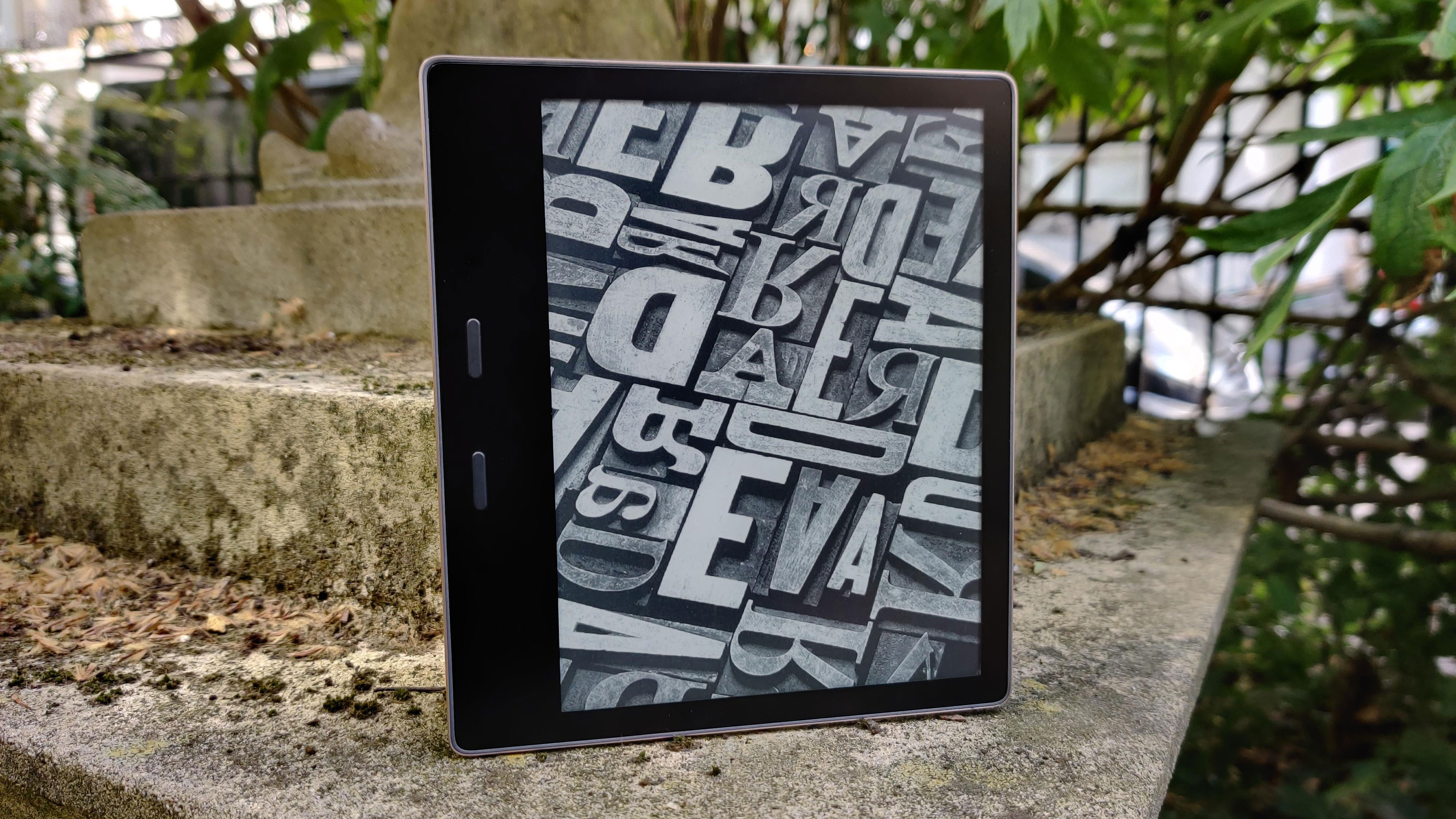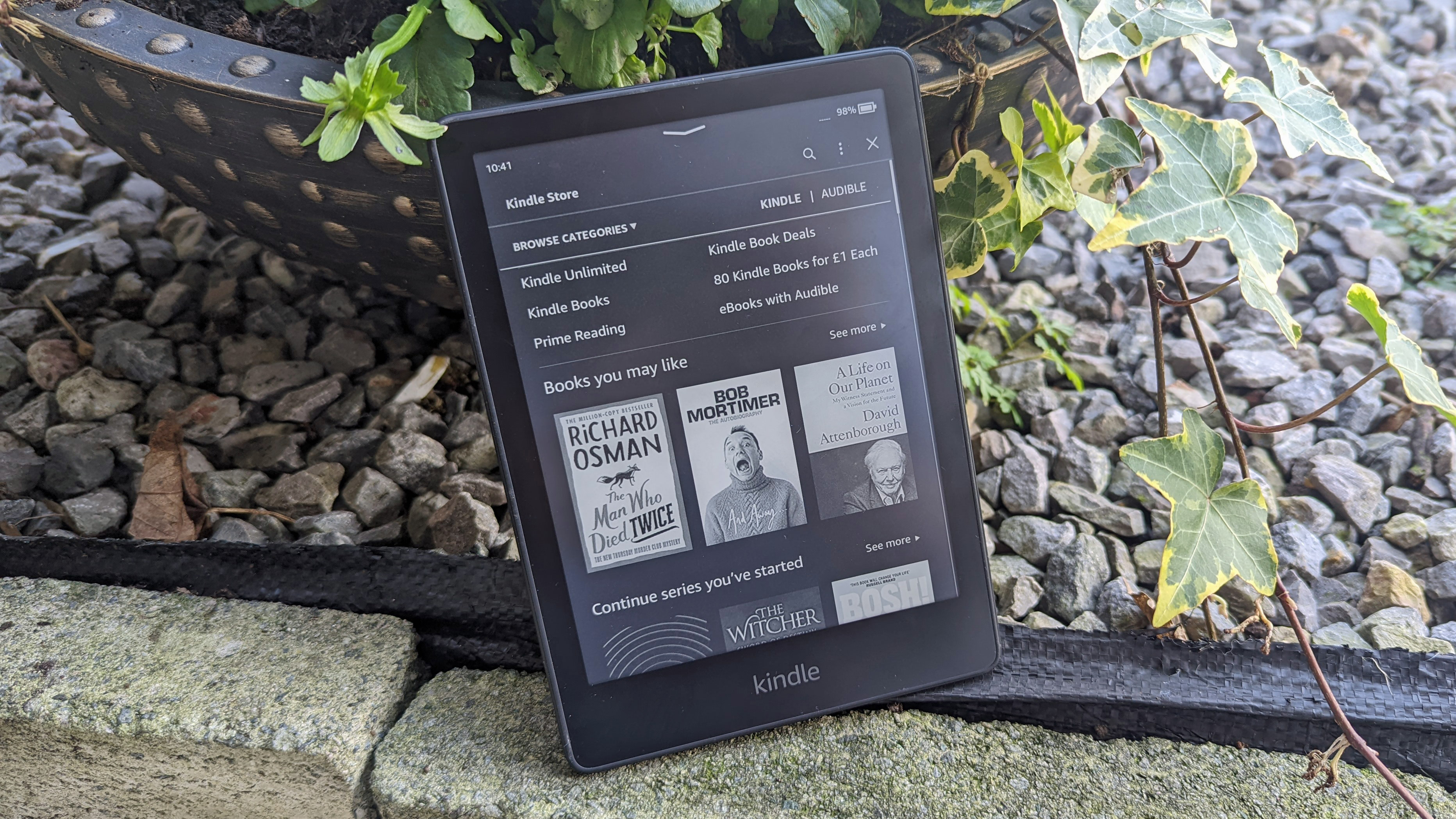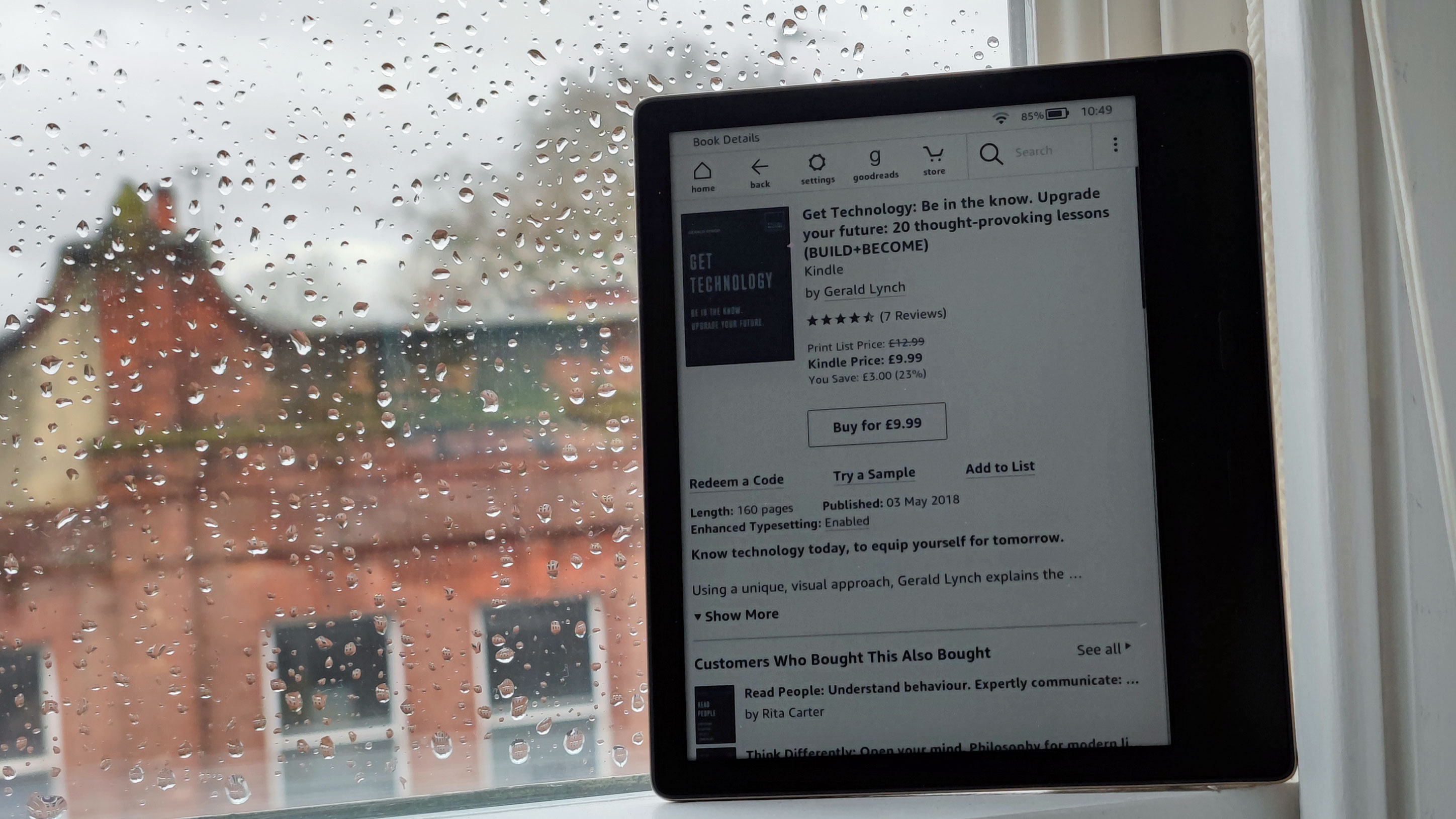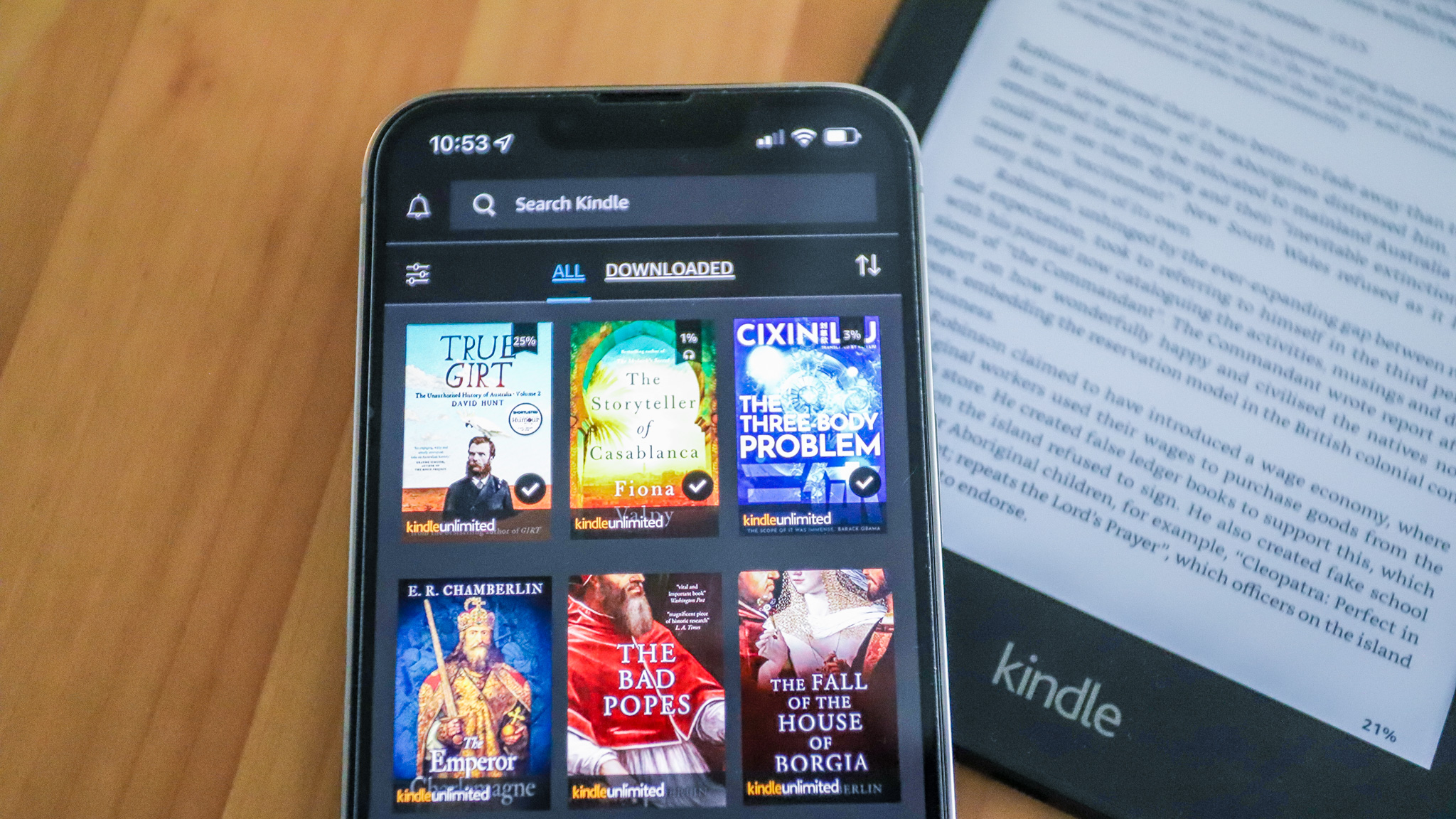Even with Prime Reading, an Amazon Kindle is a tough sell for its price
Hard to buy one of these book-alikes

I enjoy reading, and I do plenty of it on the Amazon Kindle Oasis that TechRadar was loaned for its review back in 2019 when the last version of that top-end gadget debuted. In that Kindle review, and ever since, I've constantly recommended Kindles or other ereaders to fans of literature and reading.
I'm having to return the ereader to the TechRadar office, and my first thought was "well, I'm going to have to buy my own Kindle now, aren't I?" – however, upon crunching the numbers, and thinking through my options, I'm not so sure that's a good idea.
You see, no matter how great the Amazon Kindle Oasis is (or even the cheaper standard and Paperwhite models), it's a tough sell in this economic period, and I'm not sure I can justify it compared to these other methods of reading.
The thing about books
To me, the Amazon Kindle has two main rivals.
The first is, of course, the book. The physical construct, made of paper and bound by glue, which has existed in one form or another for at least a thousand years, remains a popular method of reading (a sentence that would be an irritating truism if I wasn't writing for a tech website).
The 'OG books', as some might call them, paper- and hard-backs remain the main way of reading stories. A recent survey shows that, for every digital book sold, four physical ones are, with 37% of surveyed people saying that they'd only ever consider reading a 'real' book (compared to 7% who'd only read an ebook, 28% who'd consider both and a worrying 27% who don't actively read).
What draws me to physical books over digital ones is the price. Where I live in the UK, a new physical book will cost about £10 to £20, but in a charity shop (popular retailers which sell second-hand and donated items, the profits from which all go to charity), you'll only rarely see them go for more than £5.
Sign up for breaking news, reviews, opinion, top tech deals, and more.

In fact, a hobby of mine is going into charity shops with just a crisp fiver and seeing how far it'll get me. Generally, I'll be able to pick up a surprising number of books, and I frequently see ones I've wanted to buy anyway – it's less of a gamble than you'd expect.
Sure, you'll often see Jeremy Clarkson's entire library, a totally random assortment of Terry Pratchett novels and travel guides from the 1970s, but I almost always find a classic I hadn't got around to reading, or a gem waiting to be discovered.
On a good day, I can buy five books for that money, but sometimes I'll only manage to buy one, usually a newer one or a book in great condition (for environmental as well as financial reasons, I try to avoid buying new books).
Now compare that figure to the price of a Kindle ereader. The most affordable, an entry-level Amazon Kindle with ads, costs £69.99 / $89.99 / AU$139, but you can pay up to $279.99 / £259.99 / AU$449 for a top-storage Kindle Oasis if you want.
For the base Kindle, I could buy between 14 and 70 books for that amount (at the previously-shared prices). And for the Oasis, that's between 52 and 260. But bear in mind, we're only looking at the amount you pay for the gadget itself, and not for books.
ebooks cost money. Often it's less than the physical price, but rarely by much – and sometimes you can see novels that, for some inexplicable reason, cost more than they do in their flesh-and-blood (-and-paper) forms. There are no digital charity shops either, mind you.
If you're a Prime member, you can get Prime Reading, which has quite a few classics as well as lots of 'airport bookstore' type works, and quite a few popular novels that are the first in their series (to encourage you to buy more). It's a decent service, but one I only have since I use Prime Video and Prime Gaming a lot, and I'm not sure I'd pay for it on its own.

There's also Kindle Unlimited, which for $9.99 / £7.99 / AU$13.99 per month gets you access to a huge library of books. Compared to buying them individually, power-readers will almost certainly save money on this service, though it's still an additional expense that can quickly add up.
So using a Kindle ereader is an expensive venture – more so than reading physical books, at least based on my habits. In the current cost of living crisis, that's quite a hard pill to swallow.
A defense of ereaders?
Fans of ereaders – myself included – will defend them by pointing to their key selling point, and that's their size. A device the size of a novella can store hundreds of books, and thousands of pages.
But the Kindle isn't alone in that distinction. Do you remember when I said the gadgets have two rivals? Now's when we move on to the second one – smartphones and tablets - which are basically big smartphones.
Phones and tablets retain the core functionality of Kindles in a very simple way – the Kindle app lets you read and download books on your mobile device. In fact, they're often easier to use for buying new titles because of how slow the Kindle Store is on Kindles.
These devices generally have a lot more storage than Kindles, and have color screens, which is useful for comic books, magazines and books with illustrations. However the main appeal for these gadgets is that you likely already own a smartphone, and possibly a tablet too depending on your level of tech use.

This means that, in terms of hardware (though, as we've discussed, not books themselves), you don't have to pay anything up-front to read digitally this way, making a phone or tablet a better financial decision than a Kindle.
Plus, at least for smartphones, they're smaller than a Kindle too – most tablets are larger, but that means you've got more screen space.
To buy or not to buy
Sure, phones don't have E Ink screens, and the use of this book-alike display tech is still a very real draw of ereaders – while you can tweak display settings on modern phones to make it paper-esque, E Ink is still far better for reducing eye strain.
But what price would you pay for reduced eye strain (an arguably-dystopian question that only feels fair to raise on a consumer tech website)? Given how much more Kindles cost than second-hand books, or smartphones and the Kindle app, paying top dollar (or pound sterling, in my case) for a few extra features is a hard ask.
Admittedly Kindles are discounted frequently, which does shift the situation slightly, but I'm not sure I can justify the high cost of an ereader gadget just for these perks alone.
So, once the Kindle Oasis I've been testing gets returned to the TechRadar office, I think I'm probably going to be sticking to my combination of the Kindle app and second-hand books I pick up in my local Oxfam Bookshop. That is, unless the new Kindle Oasis comes along with a feature I just can't miss.

Tom Bedford joined TechRadar in early 2019 as a staff writer, and left the team as deputy phones editor in late 2022 to work for entertainment site (and TR sister-site) What To Watch. He continues to contribute on a freelance basis for several sections including phones, audio and fitness.